Boston Symphony Hall
Introduction
Text-to-speech Audio
Boston Symphony Hall was built in 1900 to replace the existing Boston Music Hall as the main concert venue for the Boston Symphony Orchestra (BSO), and is located on the section of Huntington Avenue designated as the Avenue of the Arts. Regarded as one of the best concert halls in the world, the hall was the first auditorium to integrate scientific acoustic principles into its design. Since its construction, the hall has retained its impressive acoustics, and both the BSO and the Boston Pops Orchestra share the venue for their yearly seasons. In 1999, the hall was designated a National Historic Landmark and is currently pending to be an official Boston Landmark.
Images
Interior view of the Boston Symphony Hall, courtesy of the 1976 Harvard Fine Arts Library Digital Images & Slides Collection. The design was groundbreaking as this Hall was the first to use scientific acoustic principles in its architecture.
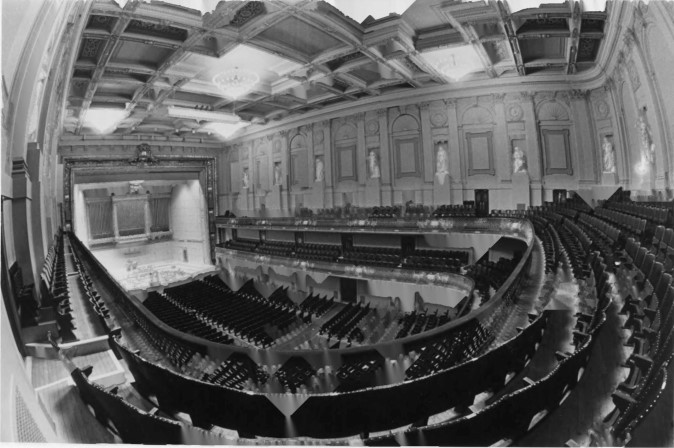
A sketch of Symphony Hall under construction that appeared in 1900; Symphony Hall was one of the many cultural institutions constructed on Huntington Avenue around the turn of the 20th century. Courtesy of BSO Archives.
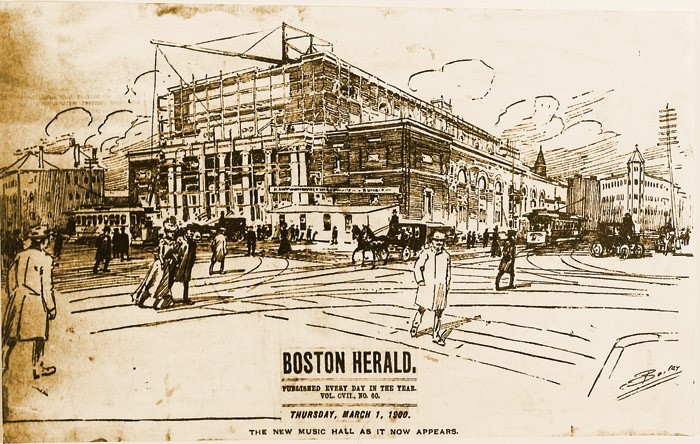
Boston Symphony owes much of its architectural influence to the Second Gewandhaus in Leipzig, Germany. Courtesy of the Frances L Loeb Library, at the Harvard University Graduate School of Design 1984 Digital Images collection.
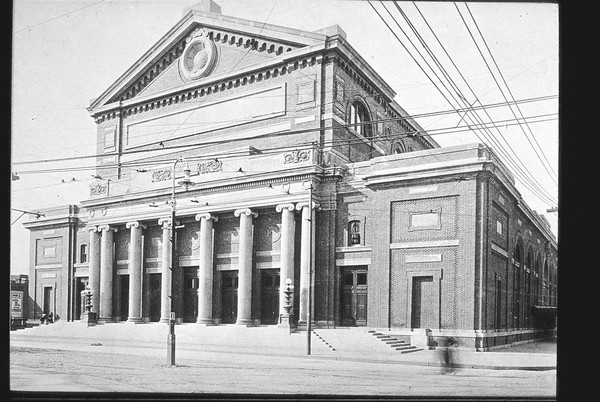
An example of the intricate architecture and meticulous sculptures within Symphony Hall, specifically one of the many statues of mythological Greek and Roman figures
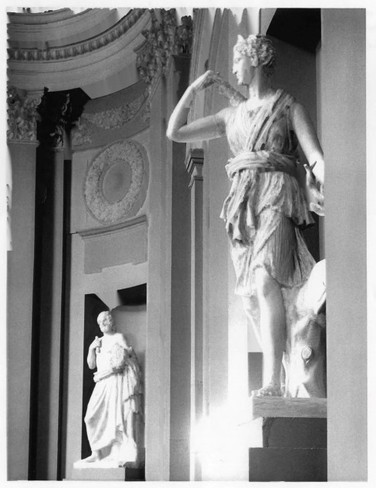
Young people in the Symphony Hall as part of the BSO’s Youth Concert Series, one of the BSO's initiatives to make classical music more accessible
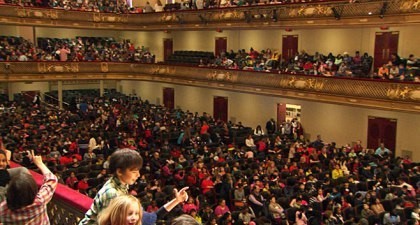
Interior view of Symphony Hall before a concert, 2006, courtesy of Wikimedia user mooogmonster. Notable features of the Hall visible from this angle are the organ, installed in 1949, and the ornate architecture which includes statues of mythological figur
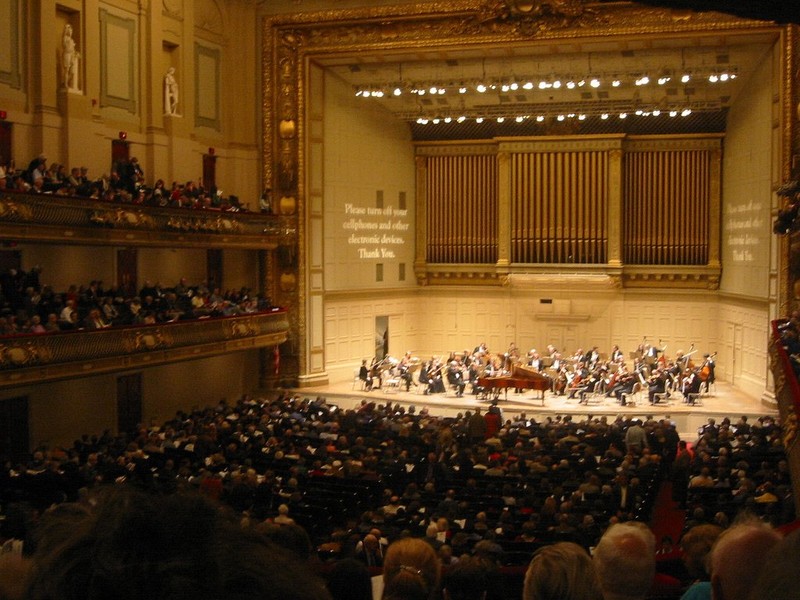
Backstory and Context
Text-to-speech Audio
The need for the construction of Boston’s Symphony Hall emerged when Boston Music Hall, the venue of the Boston Symphony Orchestra (BSO), was threatened by the construction of transportation infrastructure in downtown Boston, along with the public’s increasing disdain for the old hall. The BSO had been gaining prominence since its establishment in 1881, and the orchestra’s founder, Major Henry Lee Higginson, sought to ensure that the BSO had a place to perform. Major Higginson spearheaded a project to finance a new venue for the orchestra, soliciting help from renowned architects and music experts. He employed top-notch architects McKim, Mead & White, who subsequently enlisted the help of Harvard Professor of Physics Wallace Clement Sabine to integrate scientific acoustical knowledge into the hall’s design. Eventually, after discarding design influences such as Greek theaters, the hall was set to be modeled after the Second Gewandhaus in Leipzig, which was later destroyed in World War II [4].
The construction of Symphony Hall in 1900 was also one in a pattern of Boston construction projects on or near Huntington Avenue, a popular construction site as a result of the recently filled land it occupied. However, the majority of the larger construction projects were cultural institutions, among them the Boston Public Library, Horticultural Hall, the Museum of Fine Arts, and the New England Conservatory of Music. Despite the unrelated nature of these constructions, their concentration, especially along the stretch of Huntington Avenue, led the area to be termed the Avenue of the Arts [5].
This infusion of cultural institutions into the newly formed landscape of Boston was, as some scholars note, a measure taken by the upper class to “provide a framework, in the visual arts and music, respectively, for the definition of high art, for its segregation from popular forms and for the elaboration of an etiquette of appropriation” [6]. For the Boston elite, the Symphony Hall was a place for them to engage in high culture and escape from societal turmoil [7]. While the proximity of these cultural buildings may not have been explicitly planned, the goal of solidifying the arts as an elite escape was intentional, as all of these cultural institutions were constructed in the newest part of town, away from the lower class. There is little information about how the Hall was received by the average Bostonian, as it was only really accessible to the upper-class.
Despite this exclusionary history, the BSO has made attempts to bring music to wider audiences, mainly through present-day programming, including Youth Concerts, Student Tickets, and the Symphony for Our City program, which partners the BSO with numerous nonprofit organizations in the Boston area.
Sources
1.“The History of Symphony Hall,” Boston Symphony Orchestra Bso.Org, Accessed October, 2018.
2. Richard Dyer, "After 105 Years, BSO to Enter a New Stage," Boston.Com, August 6, 2006.
3. Anne Simon Moffat, "New Graphics Program Debuts in Concert Hall," Science 245, no. 4925 (1989): 1452.
4. Richard Poate Stebbins, “The Making of Symphony Hall—Boston A History with Documents,” Boston Symphony Orchestra, Boston, 2000.
5. Ibid.
6. Paul Dimaggio, “Cultural Entrepreneurship in Nineteenth-Century Boston: The Creation of an Organizational Base for High Culture in America,” Media, Culture & Society 4, no. 1 (January 1982): 33–50.
7. Joseph Horowitz, Classical Music in America : A History of Its Rise and Fall. 1st ed. NewYork: W.W. Norton, 2005.
8. Juan Wang, “Classical Music: A Norm of ‘Common’ Culture Embedded in Cultural Consumption and Cultural Diversity.” International Review of the Aesthetics and Sociology of Music 47 (2016): 195–205.
